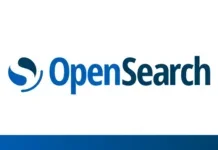The Linux Foundation has published a new blog about the use of Trademarks in open source communities:
A trademark is a word, phrase or design that denotes a “brand” that distinguishes one source of product or solution from another. The USPTO describes the usage of trademarks “to identify and distinguish the goods/services of one seller or provider from those of others, and to indicate the source of the goods/services.” Under US trademark law you are not able to effectively separate ownership of a project mark from control of the underlying open source project. While some may create elaborate structures around this, at the end of the day an important principle to follow is that the project community should be in control of what happens to their brand, the trademark they collectively built up as their brand in parallel with building up the functionality of their code.
For this reason, in communities that deem their brand important, we also file registrations for trademark protection to reserve the rights in the mark for the project, commonly in the United States, China, European Union, Japan, and other countries around the world. Registered marks will often have a ® symbol. This is different from a common law trademark right where you often see a ™ symbol with the mark. Having a registered trademark is often important because it enables us to better protect the community against misrepresentation, misuse, and confusion in the ecosystem between what is actually the community-built project, and what is not. This is often based on specific benefits that arise from the registration, which may vary from country to country.





